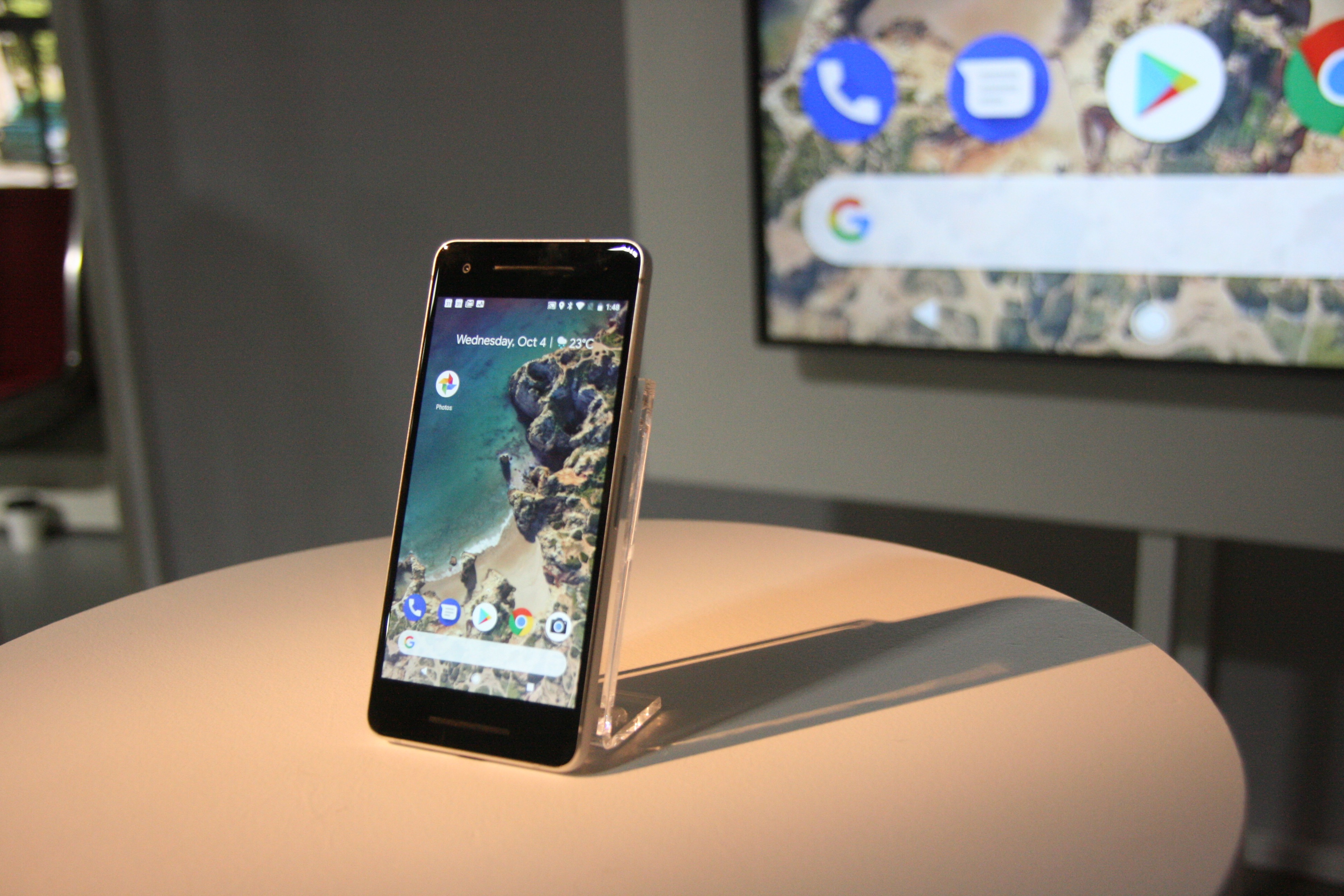On Wednesday, I went to Google’s Toronto announcement for their new upcoming products. I was ushered in a white room filled with tech journalists for a while, and then they played the San Francisco stream where Google employees rolled out the new Home Mini, Pixelbook, and Pixel Buds—wireless headphones that are for some reason connected to each other.
But the real star of the show was the Pixel 2, the new Google phone. And while most of its features seemed like more of the same, there was one thing that caught my eye: You can squeeze it. And that’s when I knew that buttons were really dead.
Videos by VICE

The Pixel 2’s new “squeeze” feature automatically turns on Google Assistant when the user applies pressure to the sides of the phone. It eliminates the need to touch any buttons or say “okay Google,” which is not a popular party trick. This follows the unveiling of the iPhone X, which also doesn’t have a home button and unlocks through facial recognition.
Maria Cortellucci, spokesperson for Google Canada, told me that their research found that the best way people could access the assistant was through top-of-the-line squeeziness.
“Overall with our hardware this year, particularly with the Pixel, we’re trying to make it more helpful for our users,” she said. The phone is able to detect what the company calls “intentional squeezes” by checking what kind of pressure is being put onto the phone. Fingers holding onto a phone: Good squeeze. A clip holding it in place in a car, or sitting on it with your butt? Bad squeeze.
The first thing I did when I got to try the Pixel 2 is give it a good squeeze. It didn’t feel squishy as I expected—it was actually just as solid as any other phone—but the phone responds with a vibration and the AI, which is actually pretty responsive, activates.
Read More: All Phones Are the Same
The whole time I was playing around with it, I didn’t touch a single button. I just kept squeezing and talking. And as more phones are getting rid of their buttons and bezels, giving over real estate to screens and internal hardware, this seems like another big step in that direction.
But yes, I’ll admit that buttons are a nostalgic thing for some, and that the thought of squeezing something to call your Google Assistant still gives me shudders. We’ll have to see if any other phones catch on.
Get six of our favorite Motherboard stories every day by signing up for our newsletter.
More
From VICE
-

Estella Kyriacou/SWMS -

Wikimedia Commons/Ygmr01 -

Alberto Rodriguez/Variety via Getty Images -

WWE
